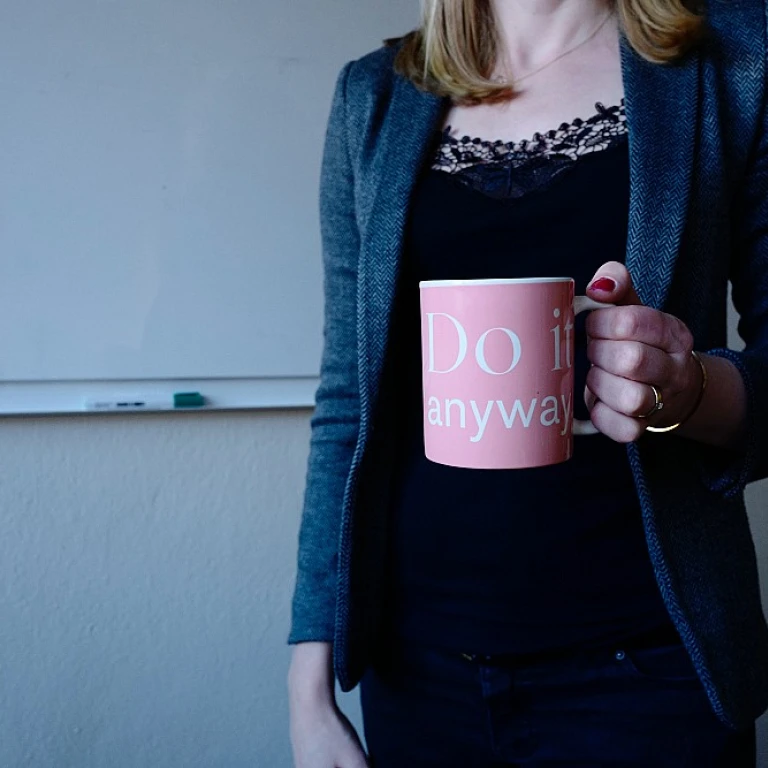Understanding the Role of Peer Models in Early Education
Understanding the Importance of Peer Influence in Early Learning
In the dynamic environment of early education, the role of peer models holds significant importance. Pre-kindergarten and kindergarten students greatly benefit from interacting with their peers, which helps shape their learning and social skills. Particularly within a school setting like Bransford Elementary, such interactions form a cornerstone of cognitive and social emotional development.
Peer models in early education serve as a bridge through which young learners connect to their school community. Acting as both learners and unofficial guides, these peers influence their fellow students through everyday interactions. High school, middle school, or even elementary school students naturally influence their peers in various educational settings. Young learners often mirror their peers, picking up social cues, problem-solving methods, and even academic approaches during activities and play.
Educators in metro Nashville public schools, including those powered by the Powerschool Corporation and SchoolMessenger Powerschool, recognize the impact of peer learning. Teachers encourage students to actively participate in learning experiences that promote communal growth and understanding. The Nashville public schools and other institutions are exploring how peers play a pivotal role in enhancing early learning outcomes in classrooms.
In subsequent discussions, we will delve into some key benefits arising from peer role model programs and how these initiatives are effectively implemented across various schools. With voices from teachers and students alike, the potential of peer models becomes a resourceful strategy discussed in educational spheres like the MNPS Voices newsletters.
Benefits of Peer Role Models for Young Learners
Advantages of Peer Influences on Early Learners
The positive impact of peer role models on young learners in pre-kindergarten and early elementary school settings is significant. As early education lays the foundational stones for a child's academic and social-emotional development, integrating peer models becomes essential.
Peer models in these formative years can lead to comprehensive benefits for students' social and educational development. Studies have consistently shown that when young learners are surrounded by peers who demonstrate positive behaviors and learning attitudes, the environment fosters a nurturing ground for mutual growth.
- Enhanced Social Skills: Pre-kindergarten and elementary students often mimic the behaviors and practices of their peers. By interacting with role models among their group, they naturally adopt improved communication and social skills, setting a strong base for later years in schools.
- Improved Learning Outcomes: In metro Nashville public schools like MNPS, peer role models actively contribute to a vibrant learning atmosphere, enhancing engagement in classrooms. This results in a higher level of participation and curiosity among students, further boosting academic performance.
- Boosted Confidence: For many students, observing their peers excel in various tasks can be motivational. When young learners recognize peers achieving goals, it can encourage them to step out of their comfort zones, opening doors to new skills and self-assuredness.
- Increased Inclusivity: Peer modeling programs cater to diverse learning needs and help create an inclusive environment within metro schools. By celebrating small successes among peers, schools powered by such models can foster a sense of belonging among all students.
In effect, peer role models serve as vital conduits for creating a supportive and progressive early learning landscape. As the Nashville public school system and the MNPS voices reflect, leveraging the naturally present social dynamics in classrooms can lead to powerful educational outcomes. With the right implementation of such programs, the trajectory of these young learners can be profoundly influenced, setting a precedent for their journey through middle school, high school, and beyond.
Implementing Peer Role Model Programs
Strategic Steps to Embed Peer Models Effectively
Implementing peer role model programs in early education requires a strategic approach tailored to the unique dynamics of elementary classrooms. At Bransford Elementary School, the implementation of effective peer modeling involves a series of well-planned steps that ensure young learners benefit socially and academically.
First, setting clear objectives for the peer role model programs is crucial. Educators must align these objectives with the broader goals of social-emotional development and early learning enhancement within the school. This alignment helps teachers and administrators assess the program's impact, offering a robust feedback loop.
Next is the careful selection and training of peer models. At Bransford, older students in elementary or middle school grades are chosen for their exemplary social and academic skills, helping them serve as positive role models for younger children, particularly those in pre-kindergarten and kindergarten. Training programs often involve guidance from teachers and use tools like mnps voices to prepare peer models to support their younger counterparts effectively.
Integration into the daily school routine is another crucial step. Peer models can be seamlessly incorporated into various activities, from classroom learning sessions to social interactions during recess. For instance, students might work together on projects that bolster social skills, providing a platform for peer interaction and learning.
Communication between teachers, students, and parents is key to the program's success. Platforms such as schools powered by Powered SchoolMessenger and tools like Nashville Public Schools' Gate Newsletter can facilitate open lines of communication, ensuring everyone is informed and aligned.
Finally, ongoing evaluation and adaptation of peer role model programs are essential to evolving the initiative in line with the changing needs of students. Leveraging feedback from students, including insights gathered through mnps tools, can lead to continuous improvement.
For schools looking to enrich their educational approaches, peer modeling can be a powerful tool. As demonstrated by the successful practices at Bransford, peer models not only contribute to the learning environment but also empower students across various grades, creating a cohesive and supportive school community. More insights into the methodologies for embedding peer models can be found in the discussion on the "Understanding Isotropic ARAP Energy Through Cauchy Green Invariants" by visiting
Continuous Learning's blog.
Challenges and Solutions in Peer Modeling
Addressing Hurdles with Effective Solutions
In any educational setting, including metro elementary schools, introducing peer role model programs can present challenges. The intent to foster an environment where young learners benefit from social and emotional learning is commendable, but the path isn't always smooth. Here's a closer look at some common challenges associated with peer modeling and some effective strategies to overcome them.
One of the primary hurdles encountered is the diverse range of student abilities and experiences. In early learning environments like pre-kindergarten and kindergarten, children exhibit varying levels of social maturity and cognitive development. To address this, schools powered by metro nashville implement differentiated approaches, ensuring that each student's needs are met while maintaining group cohesion. Leveraging platforms like SchoolMessenger PowerSchool for tracking individual progress supports tailored interventions, promoting a balanced growth for all learners.
Another challenge is maintaining a supportive atmosphere where feedback from peers is constructive rather than critical. Teachers play a crucial role here as facilitators of positive interactions. They use their voices to guide children in providing positive affirmations and support to their classmates, creating a nurturing community. Regular professional development for teachers, as promoted by organizations like Powerschool Corporation, equips them with skills to manage and encourage these interactions effectively.
Furthermore, resource allocation can be an issue, especially in public schools with budget constraints. Innovative strategies, such as partnering with local networks or leveraging digital platforms like YouTube LinkedIn for community engagement, can ease these constraints. Collaborations with organizations that support metro nashville public schools can offer additional resources and ensure these vital programs continue to thrive.
Keeping these solutions in mind, mnps and similar institutions can brighten the landscape of student learning experiences. Continuous evaluation and adaptation remain key in addressing challenges as they arise, thereby aligning the peer role model initiatives with the evolving needs of the students.
Case Studies: Success Stories from Bransford Elementary
Success Stories from Educators at Bransford Elementary
At Bransford Elementary, the implementation of peer modeling has showcased impressive outcomes, serving as an exemplar for fostering collaborative learning environments. The pre-k classrooms at this school, part of the larger metro Nashville public schools (MNPS) system, have effectively integrated social-emotional learning into their curriculum with peer role models leading the charge.
One standout case from the past year involved pre-kindergarten students who exhibited notable advancements in social skills. By participating eagerly alongside their peer models, these young learners developed improved communication skills, which extended their interactions beyond the classroom. Teachers reported a marked increase in self-expression and cooperation among the children, reinforcing the significant role of peer influences at this early stage.
Moreover, the program demonstrated significant promise in supporting students who are transitioning from elementary to middle school. Peer models from higher grades, including those in metro Nashville's middle schools, mentored younger participants, providing guidance and positive reinforcement. This mentorship not only benefited younger students but also empowered the older peers, nurturing a sense of responsibility and leadership.
A teacher from Bransford highlighted how using peer models helped enhance student engagement across various activities, including academic and recreational pursuits. This engagement was particularly evident in social settings, where children imitated the behaviors of their peer models, fostering a harmonious and supportive classroom atmosphere.
Such experiences underscore the potential of peer models within the framework of Nashville public schools' continuous-learning initiatives. Despite the challenges inherent in implementing these programs, the benefits observed among cohorts at Bransford Elementary School continue to advocate for their broad adoption across MNPS.
The sustained success of Bransford's peer model initiative further underscores the importance of aligning educational approaches with the broader objectives of early learning and social development. As schools powered by models like these take root within the metro Nashville area, they set a precedent for nurturing future generations of learners who are well-equipped to thrive in both academic and social domains.
Future Directions for Peer Role Models in Early Education
Envisioning Peer Role Models as Education Catalysts
In shaping the future of peer role models in pre-kindergarten and early education, integrating models such as those implemented at Bransford Elementary School provides a template that other schools can adapt. As evidenced by the successes seen in the Metro Nashville Public Schools (MNPS) system, including improved social skills and enhanced learning environments, these models can be transformative.
Looking ahead, public schools, like those in the MNPS, must consider expanding peer modeling programs beyond elementary levels to include middle and high schools. By doing so, they can foster continuous social-emotional development, thereby equipping students for various school transitions.
Peer role models can be particularly impactful in bridging the gap between pre-kindergarten and kindergarten or elementary and middle school. This transition can often present challenges for young learners. With the guidance of peer role models, these students experience smoother transitions, leading to improved academic and social outcomes.
Leveraging technology can further enhance the efficacy of peer modeling programs. Utilizing platforms powered by schoolmessenger powerschool or engaging students through compatible social platforms like Instagram, YouTube, and LinkedIn can broaden the peer mentoring scope. These channels provide additional avenues to nurture a spirit of collaboration and knowledge-sharing among students.
Additionally, schools could collaborate with organizations such as the Powerschool Corporation to develop cutting-edge digital tools tailored to support peer models in meaningful ways. Through newsletters like the Gate Newsletter, schools can communicate these successes, sharing their stories with broader educational networks.
Implementing peer role modeling initiatives across Nashville public schools and beyond requires understanding and addressing potential challenges. It will involve input from dedicated educators, school leaders, and community stakeholders to ensure long-term success, drawing insights from platforms such as YouTube and LinkedIn Metro.
Ultimately, the future of peer role models in early learning across Nashville and similar districts hinges on embracing innovations and leveraging community voices to ensure programs are robust, inclusive, and aligned with the diverse needs of today's learners.



